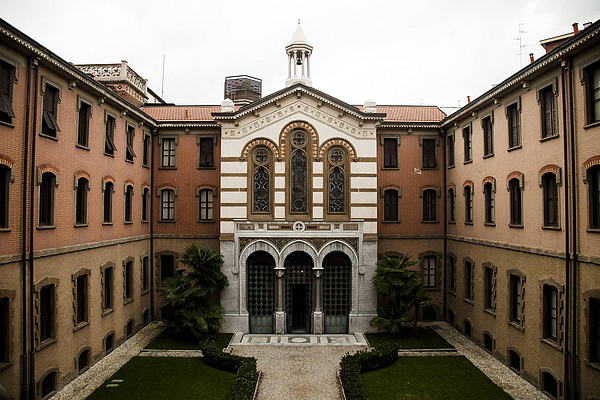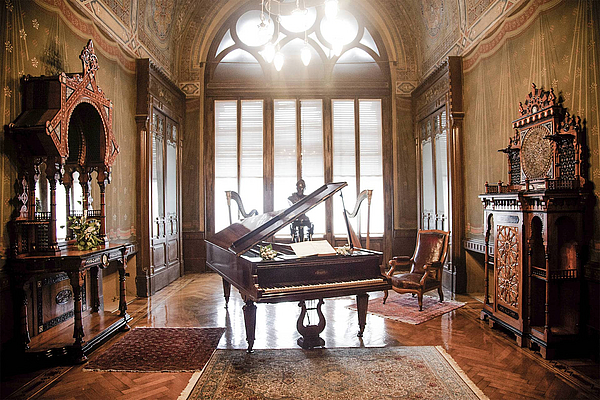This is the text that Lorenzo Arruga - music critic, director, and librettist - wrote for the publication Il riposo dell'artista - La “Casa Verdi” di Milano - published by Touring Club Italiano in 2002.
“Casa Verdi”. That is what it has always been called. Never “Casa di Riposo per Musicisti” - although the word “riposo” (repose), chosen by Verdi himself, is so intense and brilliant; never were words like “institution”, “foundation”, or “institute” used. Simply “Casa Verdi”, as if he lived there, as if someone who goes there could bump into him. He is buried there: there is the crypt - solemn, in a style that manages to be austere but almost superabundant at one and the same time - designed by the poet and librettist Arrigo Boito and by his brother Camillo, the building's architect.
There is something severe yet sumptuous, imperfect but orderly and symbolic - a bit like opera itself - and upon entering you wish you could sing opera excerpts as a way of praying, just as he did: he was non-religious and full of doubt, but he had to admit the necessity of praying precisely while he was making people sing.
The dead Verdi is there, with his wife, Giuseppina Strepponi, beside him. The Master's descendants have supposedly said that he had thought about situating his tomb at his beloved villa at Sant'Agata, and that after having chosen the Rest Home as his final resting place he had explained to his relatives: “I'm eliminating the bother of having too many people coming to visit me at your home after I'm dead!”
In Milan, everyone knows where Casa Verdi is located. People who don't know come from elsewhere, and if they ask a passerby they'll quickly be told. It's a rather curious fact that an initiative, an institution, a place, a community have inserted themselves with such familiarity into the life of a frequently harsh, indifferent city like Milan.
There is an indispensable, deeply-rooted element in this story. This is confirmed, it seems, by polls taken about places and objects that the Milanese recognize. You need only live in Milan to be sure of it. You enter, and you feel a history that does not grow old. Modernity, being up-to-date - fashion, in short - grow old, but things that are motivated, that express a reason for being, concrete intelligence, great necessity - such things live for what they are, without having to relinquish an image connected to their era. This is historic continuity.
There, in that ample, beautiful 19th-century environment, amid large windows, abundant space, and furniture that may remind us of furniture that has perhaps been in our homes for generations, but with an additional hint of something important, intimate, and solemn, one finds oneself at one's ease. It is like being in a house full of memories, a house that we would like to leave intact, always, and to take care of with affection.


